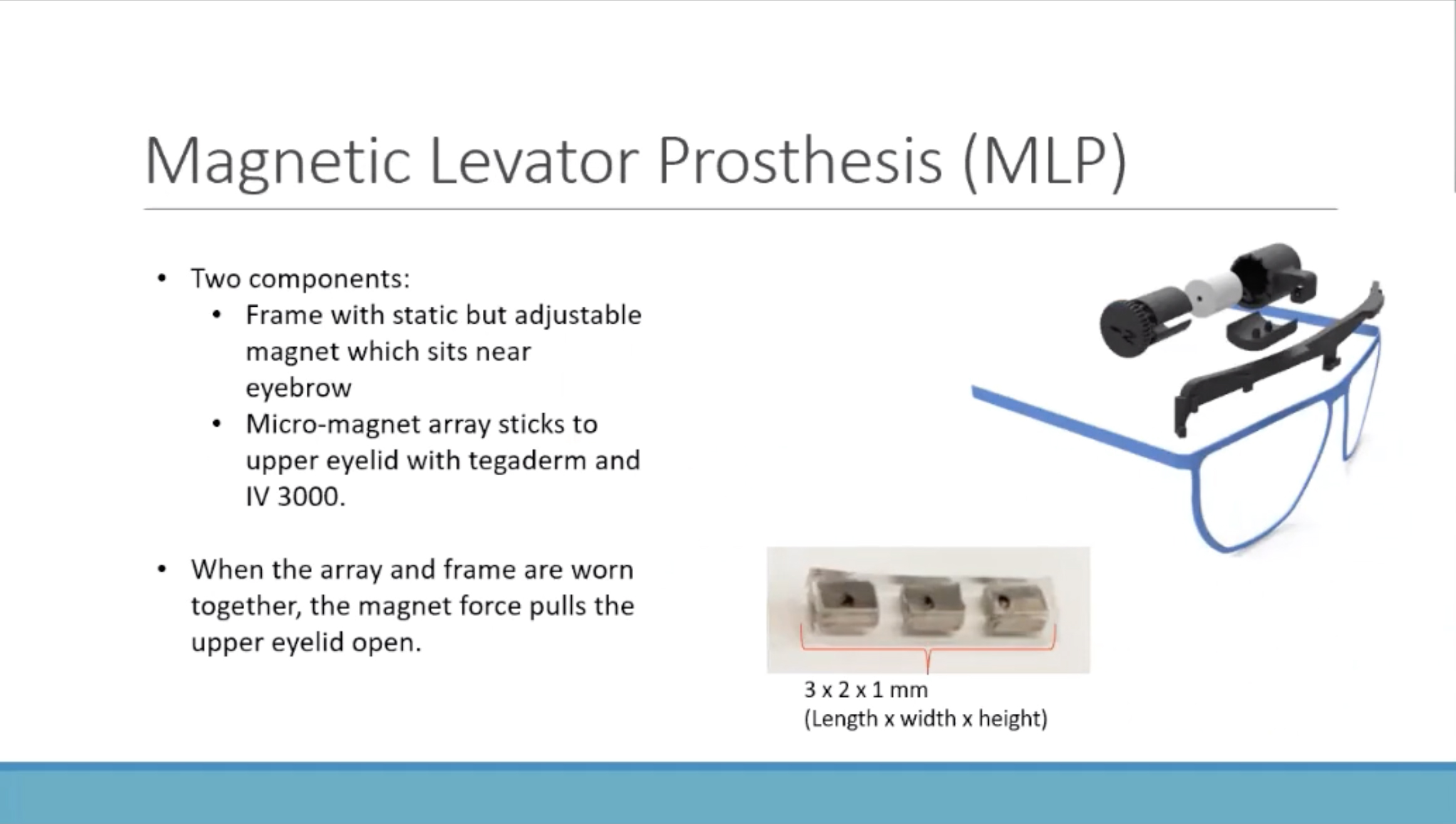An investigational treatment for severe blepharoptosis called the magnetic levator prosthesis (MLP)—comprised of a magnetic adhesive on the eyelid and a magnet in a spectacle frame above the eye—might one day spare ptosis patients a trip to the oculoplastics surgeon. Melanie Nadeau, CLVT, MSc, of the Schepens Eye Research Institute at Harvard Medical School presented the latest research on the MLP during a press conference at Academy at Home 2020.
When titrated correctly, the lid is suspended by the magnetic field and pulled open. The force allows a blink when desired, reanimating the lid. The recent study performed preliminary non-inferiority analysis of initial MLP response compared with the standard surgical correction of blepharoptosis: external levator advancement (ELA) and frontalis suspension (FS) surgeries.
 |
| During Academy at Home 2020, Dr. Nadeau discussed new findings suggesting MLP could be a useful alternative to surgery for patients with blepharoptosis. |
The study included 14 patients (18 eyes) with severe ptosis occluding the visual axis, seven of whom had a prior ptosis surgery in at least one eye. Mean eye opening (the interpalpebral fissure) and volitional blinks were not significantly different between the MLP and surgery. The opening for MLP, ELA and FS were 6.82mm, 5.77mm and 4.42mm, respectively. Spontaneous blink were 3.72mm, 2.47mm and 2.95mm, respectively.
The researchers concluded that their results suggest MLP could be as effective as surgery in ptosis. “Continued investigation is warranted assessing longer-term use of the MLP and to determine if spontaneous blink can be improved in MLP-treated ptosis,” Dr. Nadeau noted.
Nadeau M, Kurukuti NM, Paschalis E, et al. Comparing surgical to non-surgical magnetic correction of severe blepharoptosis: preliminary results. Presented at Academy at Home 2020, October 7, 2020. |


